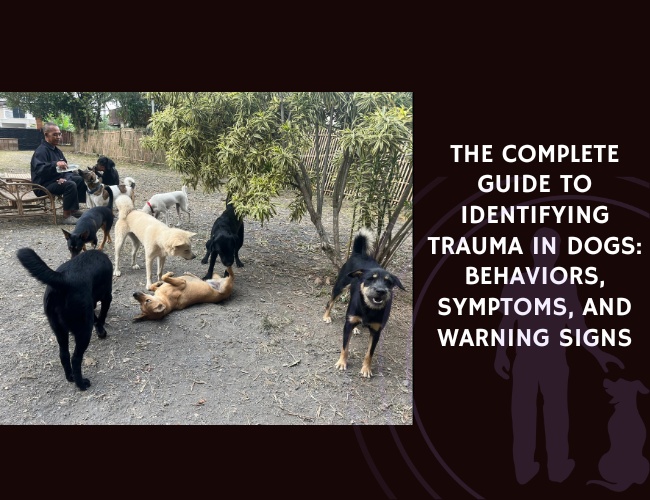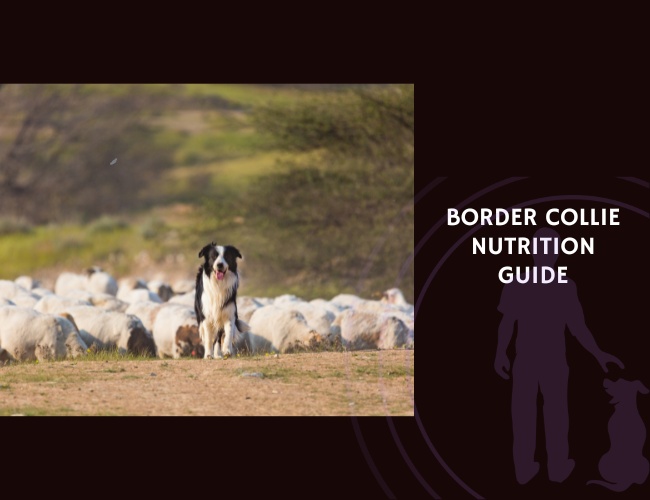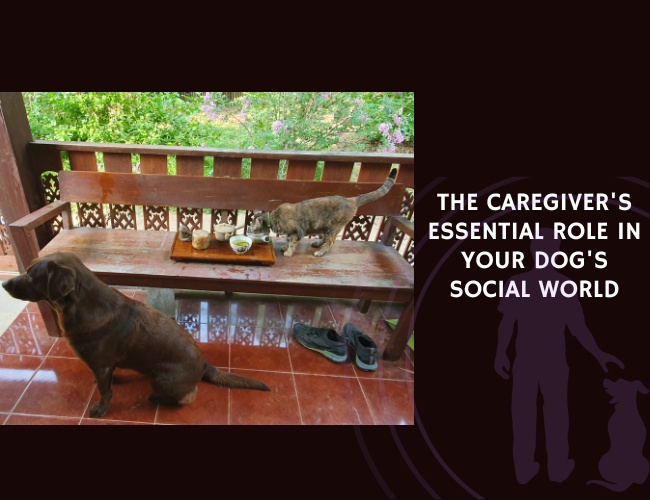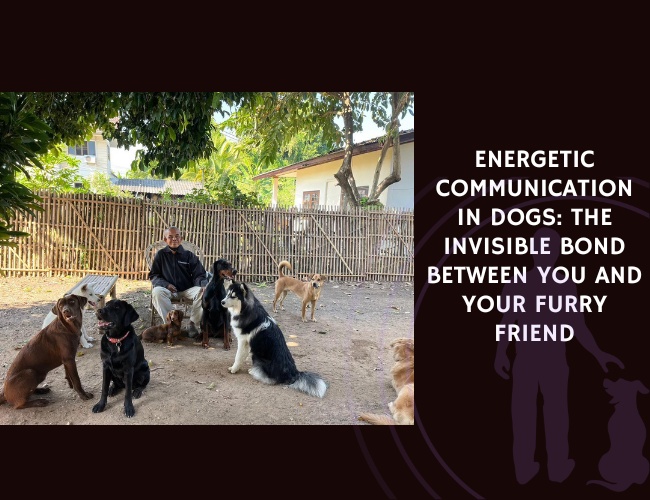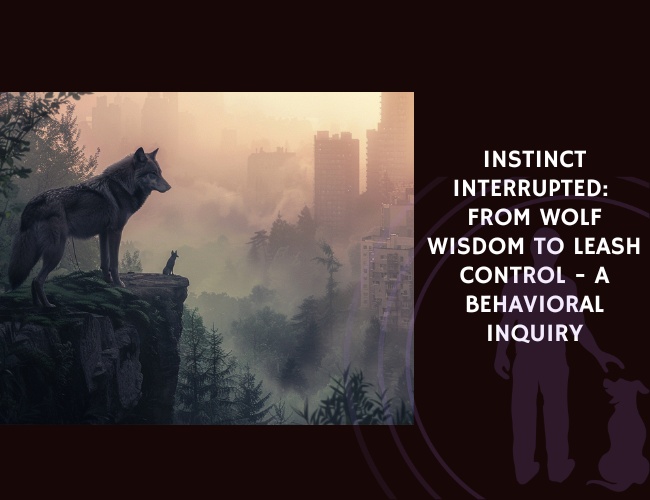Understanding Canine Trauma: What It Really Means
Defining Trauma Versus Stress in Dogs
We’re here to support you with informative insights on what trauma truly is for dogs. Trauma refers to a set of experiences that go beyond everyday stress and leave a lasting negative impact. While all dogs can feel stress in response to things like loud noises or short trips to the vet, trauma affects both their mental and physical health in deeper ways.
Stress is usually temporary and adaptive—meaning it helps dogs react to a challenge and bounce back quickly once things calm down. Trauma, in contrast, occurs after especially disturbing events or ongoing negative experiences. Unlike regular stress, trauma sticks around, often creating changes in behavior, mood, and even the body’s hormones.
Acute, Chronic, and Post-Traumatic Experiences
Let’s break it down further with professional guidance:
- Acute stress: This happens suddenly, like when a dog hears thunder. It creates a quick fear reaction but usually fades once the danger is gone.
- Chronic stress: This type of stress continues over time—imagine a dog living in an unpredictable or neglectful environment. Chronic stress builds and can eventually wear out a dog’s ability to cope.
- Post-traumatic states: These develop after severe, scary events, or repeated trauma. Dogs may stay anxious and fearful long after the situation ends, similar to PTSD(post-traumatic stress disorder) in humans. You might notice ongoing anxiety, avoidance, or jumpiness.
Why Recognizing Trauma Is Crucial
Recognizing trauma is essential for your dog’s wellbeing. Trauma isn’t just “bad behavior”—it’s a serious issue that affects relationships, health, and quality of life. Being aware of these signs helps you create a supportive environment and seek the right help when needed 😊. Understanding these differences is the first step to helping your dog feel safe and healthy each day.
Let’s continue to explore what can cause these traumatic experiences for our furry companions.
Common Causes of Trauma in Dogs
Understanding the roots of trauma in dogs can be eye-opening and help you create a more supportive environment. Let’s explore the most typical causes your canine companion might face.
Physical Abuse, Neglect, and Abandonment
Physical abuse, repeated punishment, and neglect are major contributors to canine trauma. These experiences can lead to both acute stress and long-lasting emotional wounds. Dogs subjected to harsh handling or chronic neglect often lose trust in humans. Abandonment is another significant trigger—it shatters a dog’s sense of security, sometimes leaving them hypervigilant and fearful of new environments.
Environmental Trauma
Not all trauma comes from direct human interactions. Environmental factors like natural disasters, house fires, car accidents, or even attacks by other animals can deeply affect your dog. Sudden events like these create a sense of unpredictability and danger. Dogs may develop long-term anxiety related to certain places, sounds, or situations that remind them of the original traumatic event.
Early Life Experiences
Early puppyhood is a critical period for brain development. Traumatic experiences during this time—such as lack of socialization, early weaning, or chaotic living conditions—have a big impact. Puppies exposed to stress at a young age are especially vulnerable to developing lasting behavioral and neurological effects. It’s been shown that early stress can alter normal brain growth, making it harder for dogs to adapt to challenges later in life.
By understanding the types of events that can cause trauma in dogs, you’ll be better prepared to recognize risk factors and respond with compassion and professional guidance. Creating awareness now builds a more nurturing and supportive environment for every dog, today and in the future.
Behavioral Warning Signs of Trauma
Understanding your dog’s behavior is key in creating a supportive environment 😊. Recognizing the warning signs of trauma goes beyond observing stress—it’s about identifying patterns that hint at deeper distress. Informative insights and professional guidance help us interpret the most common behaviors seen in traumatized dogs.
Hypervigilance and Startle Responses
A traumatized dog may display constant alertness. Hypervigilance shows up as scanning the environment, restless pacing, and difficulty relaxing. If you notice that your dog jumps or startles easily at regular household noises, this exaggerated startle response is a strong indicator of underlying trauma. These behaviors reveal your dog is stuck in a state of anticipating danger and can’t fully unwind or feel safe.
Avoidance, Hiding, and Learned Helplessness
Supportive environments matter, especially when dogs avoid normal activities. Common indicators include:
- Hiding under furniture or in small, enclosed spaces
- Avoidance of certain people, places, or situations
- Freezing or becoming unresponsive to commands
- Showing no interest in play or walks they once enjoyed
When repeated, these behaviors can lead to learned helplessness. The dog may stop trying to escape scary situations, believing nothing they do will help—a critical sign for professional intervention.

Aggression and Social Changes
Trauma often causes shifts in social behavior. Dogs may become withdrawn, avoiding affection or eye contact, or they could act out with defensive aggression. This type of aggression frequently appears in dogs who were previously friendly but now snap or growl when approached. Such changes are the dog’s attempt to protect themselves from perceived threats, even in safe environments.
Understanding these signs helps you provide a compassionate, supportive environment as your dog moves toward healing.
Physical Symptoms That May Indicate Trauma
Understanding the physical symptoms linked to trauma in dogs is key to providing professional guidance and a supportive environment for healing. Dogs often show their distress not just with behavior but also through their bodies. Recognizing these physical changes can make all the difference for your dog’s wellbeing.
Physiological changes in traumatized dogs
A dog going through trauma may experience major physiological shifts. One of the most telling signs is elevated cortisol levels. Cortisol, often called the “stress hormone,” stays high during chronic stress, impacting your dog’s immune response and overall health. This increase can often be detected by your veterinarian using saliva or hair samples.
Alongside cortisol, you might notice a consistently high heart rate—even when your dog should be calm. Rapid or pounding heartbeats, especially in quiet settings, signal ongoing anxiety. Sometimes, you may also see dilated pupils, signaling heightened arousal or panic.
Sleep and appetite disruptions
Sleep disturbances are common in traumatized dogs. Restlessness at night, difficulty settling, or sudden waking can be red flags. Some dogs may even display behaviors that look like nightmares—whimpering or twitching in their sleep.
Eating patterns often change, too. Dogs dealing with trauma may lose their appetite or, in some cases, overeat. Some may vomit, have diarrhea, or become picky about food. These digestive upsets are a common physical marker of emotional distress.
Persistent health issues
Chronic trauma often leads to recurring health issues. You might see digestive problems like frequent vomiting, diarrhea, or constipation. Skin conditions, such as repeated infections or excessive licking that create sores, can also develop. The urge to self-soothe with compulsive licking or biting is often a sign of deeper anxiety.
Spotting these physical signs early allows you to respond with informed, compassionate care. As you observe these symptoms, remember each dog’s journey is unique, and your efforts to understand them create a more supportive environment. 😊
Signs. Scars. Support.
Trauma Runs Deep
Trauma in dogs isn’t just fear—it’s a lasting imprint from overwhelming stress, neglect, or loss. While stress fades, trauma lingers in behavior, body, and brain. Spotting the signs early is the first step toward healing.
Behavior Tells the Story
From hypervigilance to withdrawal, your dog’s reactions speak volumes. Trauma shows up in small cues—shaking, hiding, aggression, or loss of appetite. Recognizing these behaviors means you’re ready to offer comfort, not correction.
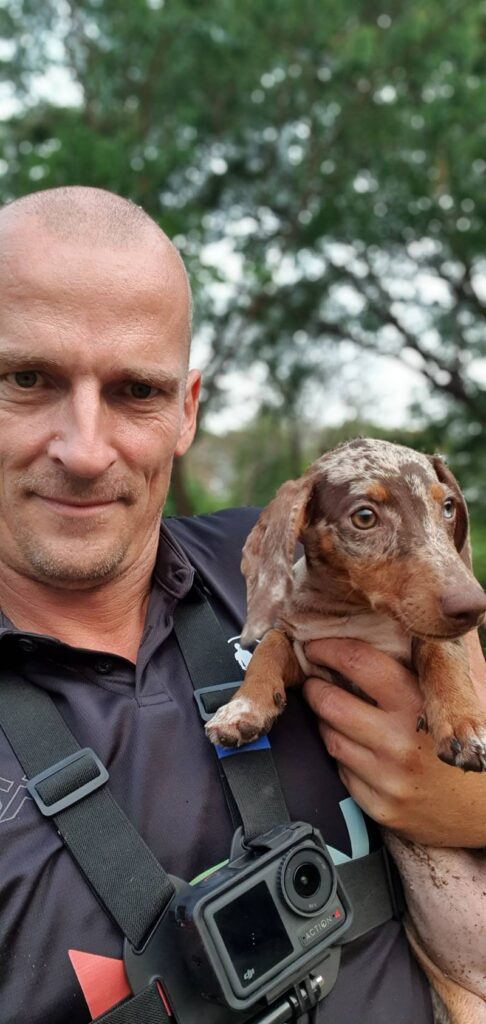

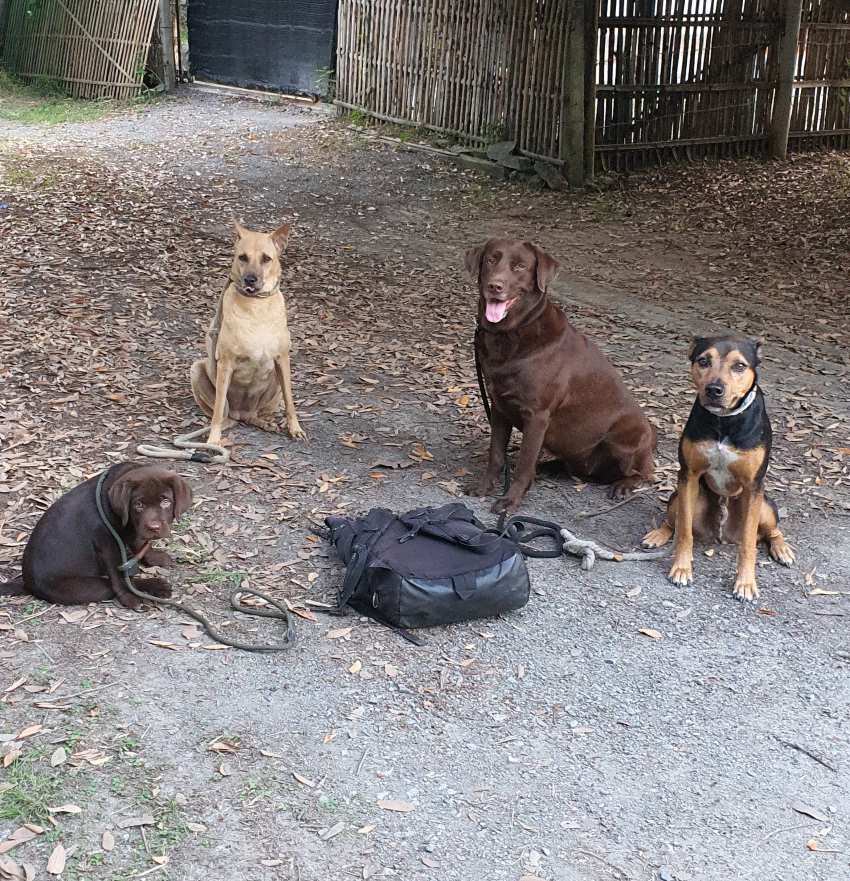
Compassion Changes Everything
Healing starts with safety, routine, and trust. With patience, structure, and gentle support, even the most wounded dogs can regain confidence. Your calm presence becomes their path back to balance.
The Neuroscience Behind Canine Trauma
Trauma and the canine brain
We’re here to support you with informative insights into how trauma changes your dog’s brain. At the center of this is the amygdala, which is responsible for processing fear and threats. In traumatized dogs, the amygdala becomes extra active. This can leave your dog constantly on high alert, uneasy, and quick to react, even to harmless triggers. These heightened responses mean your dog may have trouble relaxing and feeling safe.
Serotonin, a neurotransmitter, also plays a role. When serotonin levels drop, it can make anxiety and mood swings more common in dogs, increasing the risk of compulsive behaviors or social withdrawal. Living with chronic worry affects more than mood—it changes daily life for your pup.
Hormonal effects and stress
The professional guidance from veterinary science highlights cortisol, the “stress hormone.” Long-term trauma keeps cortisol levels elevated, harming your dog’s immune and digestive health. A traumatized dog may also have imbalances with oxytocin (the bonding hormone) and norepinephrine (which triggers fight or flight). These changes can lead to trouble with bonding, increased fear, and challenges interacting with other pets or humans.
How trauma shapes young brains
Developing brains are especially vulnerable. Early trauma changes how a puppy’s brain develops, affecting myelination (the way nerves carry information) and gene expression. These changes make it much harder for dogs to cope with stress later on, making recovery a longer journey. That’s why protecting young dogs from trauma is crucial—they’re less equipped to “bounce back” than you might think.
Remember, understanding these brain and hormonal changes is key to building a supportive environment for your dog’s healing. 😊
Diagnosing Trauma in Your Dog
Professional assessment tools
We’re here to support you with practical, informative insights for understanding if your dog might be suffering from trauma. Diagnosing trauma goes beyond spotting a few odd behaviors—professionals use targeted tools to get a clear picture.
Ethograms are detailed checklists that capture how often and when specific behaviors occur, like pacing, hiding, or sudden aggression. When used by a skilled observer, ethograms turn observations into reliable data, helping to identify patterns linked to trauma.
Another common method is heart rate variability(HRV), which tracks changes in your dog’s heart rate. High stress and trauma often cause the heart rate to spike or become less adaptable. This non-invasive tool helps measure your dog’s background anxiety level without stress.
Some vets also use hair cortisol analysis. By testing small samples of fur, it measures your dog’s long-term stress hormone levels. While this is not always available, it can be a useful indicator of chronic stress or trauma.
The role of questionnaires and your veterinarian
Owner-based questionnaires are a simple, supportive way to gather information about your dog’s behavior. You’ll answer detailed questions about any changes—like appetite, sleep, play, or fear responses. Be honest and as specific as possible, as even small behavioral shifts matter.
When talking with your veterinarian, share any observed changes and possible incidents that may have triggered them. The more detail you provide, the more accurate the assessment will be.
When to seek specialized help
If standard approaches aren’t bringing improvement, professional guidance from a veterinary behaviorist can make a huge difference. These experts use advanced tools—sometimes including functional MRI(fMRI)—to understand your dog’s emotional state. Early and accurate diagnosis helps set up a more effective care plan, paving the way for your dog’s recovery journey.
Creating this supportive environment starts the path to long-term wellbeing. 😊
Long-Term Consequences of Untreated Trauma
Fear generalization and its impact on quality of life
Untreated trauma can deeply affect a dog’s daily life and overall happiness. When dogs experience trauma, they often develop fear generalization. This means a single bad event can make them scared of many similar places, sounds, or situations—not just the original trigger. For example, if a dog is frightened during a thunderstorm, it may begin to fear all loud noises or even the outdoors. This makes normal activities difficult for your furry friend and may reduce their quality of life significantly. A once-happy walk in the park can become a source of anxiety and discomfort.

Challenges in behavior modification and training
Dogs with untreated trauma often struggle to learn new behaviors or break old habits. Trauma can cause changes in the brain that make learning hard. Training becomes challenging because fear gets in the way of focus and memory. Standard methods, like treats or praise, may not work well. These dogs may freeze, shut down, or react aggressively instead of responding to gentle cues. Extra patience and tailored approaches are vital for their progress, leaving many families feeling stuck or frustrated if they do not have professional guidance.
Relational trauma and effects on other dogs
Trauma does not just impact one dog—it can ripple out to others in the household. If a traumatized dog is anxious or aggressive, other dogs might start to copy these behaviors or feel stressed, too. Dogs notice and react to the mood and actions of their housemates. This can create tension and even lead to new behavioral challenges in once-stable pets. Building a calm environment and seeking support is important for the whole family.
Healing from trauma takes time, consistency, and compassion, but it’s possible with a supportive environment. 😊
Treatment Approaches for Traumatized Dogs
Behavioral Modification: Counterconditioning and Desensitization
Helping a traumatized dog often begins with changing their emotional response to triggers. Two effective techniques are counterconditioning and desensitization. Counterconditioning means pairing the thing your dog fears with something they love, like treats or playtime. For example, when your dog sees a stranger (a trigger), offer a tasty treat. Over time, the dog learns to expect good things, not just fear. Desensitization is all about slow exposure. Gradually, in a controlled and safe way, the dog is exposed to the scary thing at a level they can handle. This builds tolerance bit by bit, creating positive associations instead of fear.
When Medication Might Help
Sometimes, behavior training alone is not enough. Medication-assisted therapy can support healing. Selective serotonin reuptake inhibitors (SSRIs) or anxiolytics may be prescribed by your veterinarian to help manage anxiety and other severe trauma symptoms. Medication can reduce the intensity of fear and help your dog participate in behavioral modification more successfully. Remember: any medication should be used under strict veterinary guidance for safety and effectiveness.
Structured Routines, Safe Spaces, and Consistency
Consistency is your dog’s best friend. Supportive routines—feeding, walking, and playtime at set times—give your dog a sense of safety and predictability. Establishing a dedicated safe space like a comfy crate or a quiet room helps your dog retreat when needed. Consistent caregivers and routines strengthen trust. Patience and calm, steady support from attachment figures are vital for recovery 🐾.
Every dog is unique. Some may progress quickly, while others need more time. With appropriate interventions and a caring approach, you can unlock a happier, more confident life for your dog.
Creating a Healing Environment at Home
Setting up a safe and predictable space
Supporting a traumatized dog starts with creating a safe and calm environment. Dogs feeling unsafe often need a dedicated spot where they can retreat and relax, away from noise and busy foot traffic. This “safe zone” might be a quiet room, their crate with a soft blanket, or a corner filled with their favorite toys. Keeping this area consistent helps reduce anxiety and gives your dog a sense of control.
Predictable routines matter, too. Feed and walk your dog at the same times each day. Predictability offers reassurance, making daily life less overwhelming. Use gentle, familiar commands during transitions, such as bedtime or preparing for walks. Over time, this routine helps your dog anticipate what will happen next, building their confidence.
How to interact with a traumatized dog
Approach your dog with patience and at their pace. Let your dog come to you rather than forcing attention. Speak in a calm, soft voice. Avoid direct eye contact if your dog finds it threatening. Short, positive interactions build trust without increasing fear.
If your dog displays anxious behaviors, avoid scolding or punishing them—this can intensify their fear. Instead, reward calm, relaxed behaviors with gentle praise, treats, or their favorite toy.
Building trust through patience and positive experiences
Trust is earned slowly, especially after trauma. Celebrate small signs of progress like your dog coming out from hiding or approaching calmly. Introduce new experiences gradually—short walks in quiet areas or brief play sessions with a familiar toy. Stay supportive and encouraging, creating many moments of safety and calm each day.
Consistency, structure, and compassion form the core of a healing environment. With steady support, your dog will begin to rediscover their confidence and find comfort in your caring presence. 😊
Recovery Timeline and Setting Realistic Expectations
Healing as a Gradual Journey
We’re here to support you with informative insights: recovery from trauma is a step-by-step process and rarely follows a straight path. Your dog may show progress one day, only to have setbacks the next. This is entirely normal and part of healing. Creating a structured routine, offering consistent caregiving, and providing safe spaces lay the foundation for recovery. Keep in mind: patience and understanding are your most valuable tools! 🐶
Celebrating Small Victories
Small improvements mean big wins in recovery. Did your dog come out of hiding today or eat a full meal after days of nervous picking? Celebrate those moments! A supportive environment that recognizes even tiny steps—like taking a treat near a trigger or sleeping more peacefully—boosts your dog’s confidence. Use gentle praise, extra cuddles, or a favorite toy to reinforce positive behaviors.
Progress Indicators to Watch
Look for these progress markers:
- Reduced startle response in familiar settings
- More willingness to explore rooms or go outside
- Interest in toys, play, or positive interactions with family
- Better sleep and regular eating patterns
Each sign means your dog’s brain and body are adapting in healthy ways.
Adjusting Treatment When Progress Stalls
If things seem stuck or your dog regresses, don’t lose hope! Healing can include tough days or weeks. Sometimes, a change in approach—adjusting routines, adding calming aids, or consulting your veterinary behaviorist—is helpful. Setting realistic expectations and staying flexible ensures you don’t get discouraged. Remember, each dog is unique, and steady encouragement makes a world of difference.
As your dog continues this journey, proactive steps can help prevent trauma in the future and build lasting resilience. 😊
Prevention: Protecting Your Dog from Future Trauma
Building Resilience Through Socialization
Providing positive socialization is one of the best ways to help your dog handle everyday stressors and unexpected events. Early social exposure to various people, animals, sounds, and environments allows your dog to develop confidence and adaptability. Start slow, letting your dog investigate new settings at their own pace. Use treats or play to create rewarding associations with positive experiences. Remember, even adult dogs benefit from gentle socialization—it’s never too late to support confidence building 😊.
Managing Potentially Traumatic Situations
Vigilance and preparation are key to avoiding preventable trauma. If you know your neighborhood often has fireworks or loud festivals, plan ahead with safe spaces and distraction techniques for your dog. During storms or emergencies, use familiar routines to provide comfort. When introducing new people or animals, watch for stress signals like yawning or hiding, and step back if your dog seems overwhelmed. Short breaks, safe retreats, and patience reduce the risk of traumatic responses.
Strengthening the Human-Canine Bond
A strong, reliable bond with you can shield your dog from the worst effects of fear and uncertainty. Consistent routines, kind words, and calm guidance make a world of difference. Let your dog approach new situations at their pace, and avoid forcing interactions. Reliable caregivers who use positive reinforcement help a dog feel safe in their world. The trust you build together acts as a foundation for resilience—helping your dog bounce back even when faced with life’s surprises.
By focusing on early socialization, careful management, and a supportive relationship, you’ll create a nurturing, trauma-resistant environment for your furry friend.

